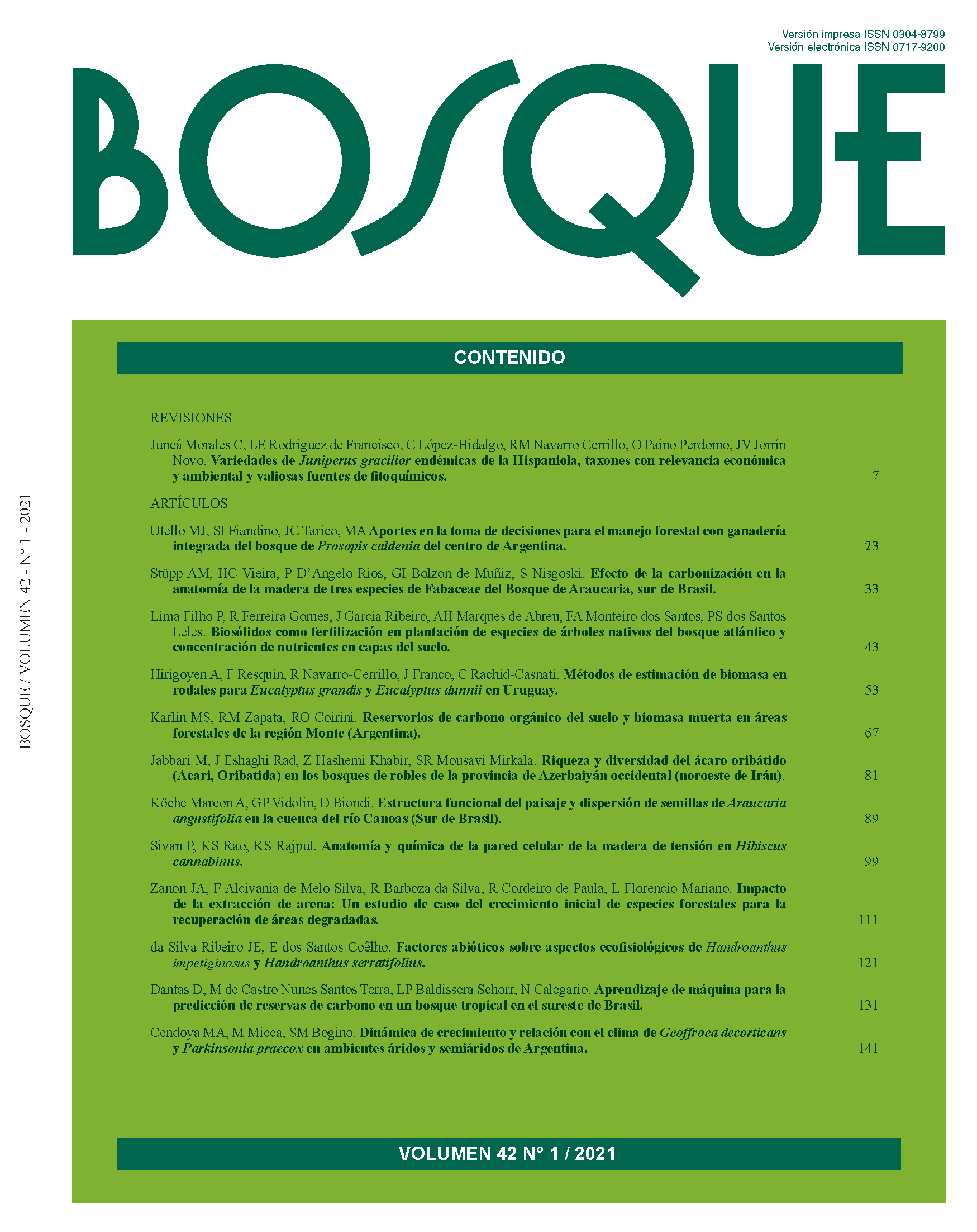Effect of carbonization on wood anatomy of three Fabaceae species from an Araucaria forest stand in Southern Brazil
Conteúdo do artigo principal
Resumo
The aim of this study was to measure and compare some anatomical elements of wood and charcoal of Inga vera, Machaerium paraguariense and Muellera campestris to support identification of the materials seized by regulatory authorities. For each species, three trees were analyzed. After wood evaluation, all samples (moisture content of 12 ± 1 %) were wrapped in aluminum foil and carbonized in a muffle furnace for 8 hours with final temperature of 450 °C and a heating rate of 1.66 °C/min. The number of measurements was based on 30 readings regarding tangential diameter and vessel density, along with frequency, height and width of rays (in micrometers). After carbonization, changes in cell dimensions and different behavior were observed in the Fabaceae species evaluated. In all species, vessel diameter declined; vessel density decreased in Inga vera and increased in the other species; ray height decreased in Inga vera and Muellera campestris, and increased in Machaerium paraguariense; and ray width and frequency increased in all species. We concluded that due to the conservation of wood anatomical structures after carbonization, the inclusion of this species in a database would be effective to support efforts to control deforestation in the south of Brazil.

